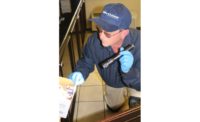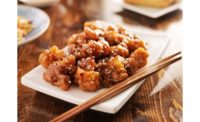Exclusive interview: Q&A with Seven Sundays on glyphosate




Food Safety Strategies was recently able to interview Brady Barnstable, co-founder and COO of Seven Sundays, which recently committed to sharing glyphosate test results with its consumers. Glyphosate, or "weed killer," has recently been showing up very frequently in products, including kids' cereals, at alarmingly high levels.
Liz Parker: How can one tell if there is glyphosate in a product? And what are “safe” levels of glyphosate, if there are any? (ie, is there any level at which products are still safe to eat?)
Brady Barnstable: The only way to determine whether there is glyphosate residue on a product is by performing a laboratory test. Currently, there is no consensus on what is considered “safe” levels of glyphosate. In 2008, the EPA set a tolerance limit of 30,000 parts per billion (ppb) for glyphosate on cereal products, however this was before the International Agency for Research on Cancer listed glyphosate as a "probably carcinogenic" to people in 2015. The EWG recently stated that 160 ppb should be the standard “safe level." The bottom line is that many of our consumers are not comfortable with any glyphosate in their food, especially breakfast cereals that they eat every day and feed to their families.
LP: Glyphosate is classified as “probably carcinogenic” by the International Agency for Research. Do you agree with this?
BB: Yes, we believe that until further research and testing is done, glyphosate should be considered carcinogenic and harmful if consumed at unsafe levels. The research is sufficient to cause consumer concern and should push food manufacturers to test their products for glyphosate.
LP: Why did Seven Sundays choose to share their findings directly with their readers on their website?
BB: Several years ago, we met with our oat suppliers to discuss the issue of glyphosate spraying on oat crops. At that time, we implemented a strict supplier approval process in which we require that our suppliers have a written ban on the use of glyphosate, and also regularly test incoming grains from farmers to check compliance. Last month, we began voluntarily testing our muesli for glyphosate. All our products have tested glyphosate residue free. We decided to begin posting the results on our website after receiving a significant amount of inquiries from consumers regarding the issue. They asked for direct answers, not a “blanket” response. We feel consumers deserve total transparency on this issue, and committing to sharing our third party test results is the best way to accomplish this.
LP: Has glyphosate in cereals and other products increased or decreased over the years? Why do you think this is?
BB: Yes. Oats are historically a low input crop. The use of roundup as a drying agent (desiccant) on small grains such as wheat and oats has increased over the years due to the widespread availability and low cost of glyphosate. As such, we will continue to stay on top of this issue, routinely test our products to ensure compliance to the ban and make our products safe and clean. We hope others follow suit.
Looking for a reprint of this article?
From high-res PDFs to custom plaques, order your copy today!










